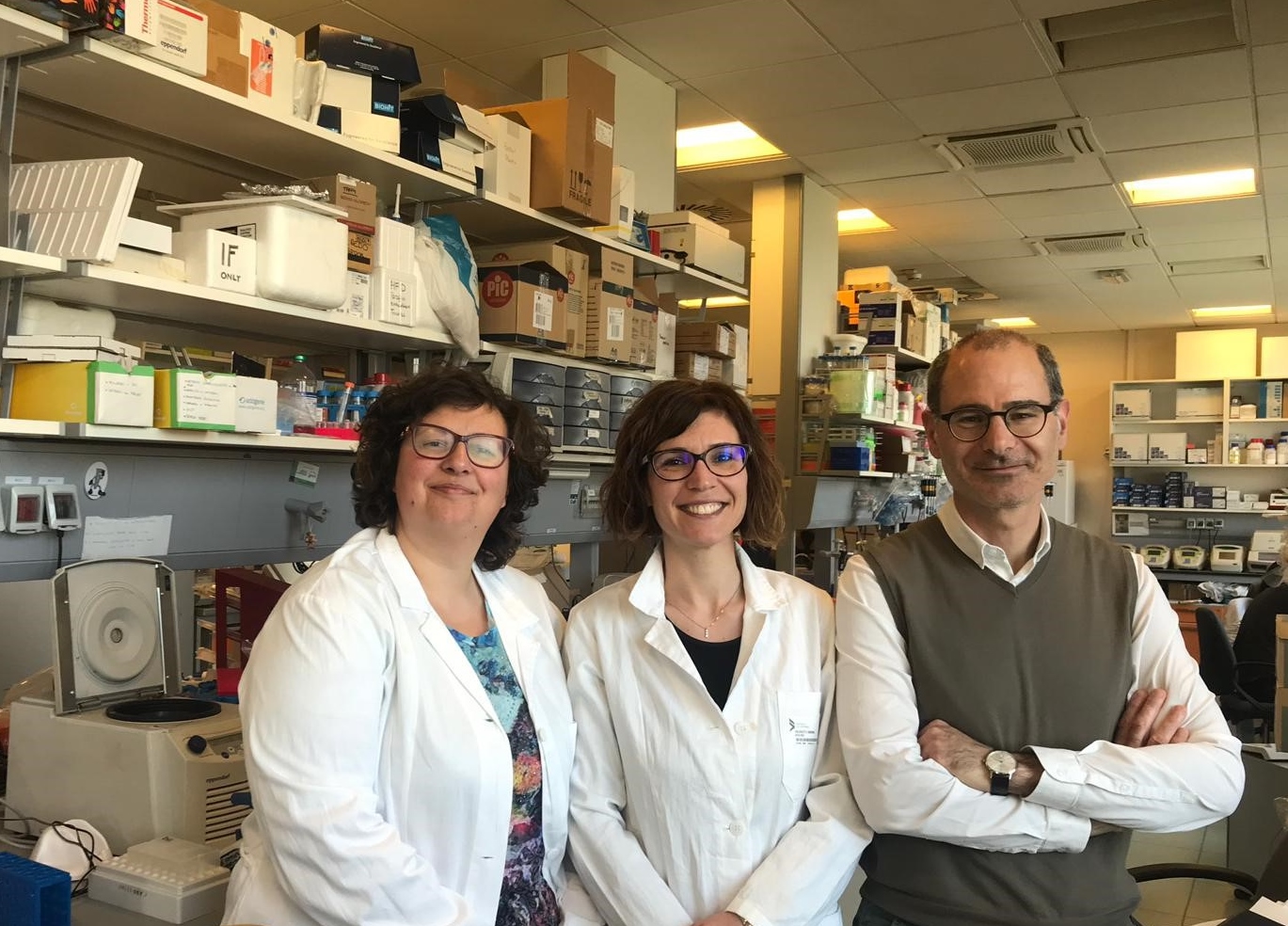News
Discovered two epigenetic regulators of metabolism
According to the World Health Organization, over 600 million people worldwide suffer from obesity and are therefore at an increased risk of developing pathologies such as diabetes, hypertension or cancer. Only a number of cases are determined by genetics: we know that the disease is mostly due to unhealthy lifestyles, such as a high-calorie diet or physical inactivity, but scientists still struggle to understand how habits modifications affect cells and tissues at the molecular level, giving rise to the pathological condition. Simona Pedrotti, researcher of the Gene expression and muscular dystrophy Unit held by Davide Gabellini, has discovered the role of two enzymes that are able to regulate metabolism and react to environmental stimuli. The study, published today on Science Advances, shows that switching off the enzymes activity in fat cells results in greater energy consumption, better glucose tolerance and an overall reduction in fat tissue. The discovery paves the way for new therapeutic approaches to obesity.


Simona Pedrotti, Roberta Caccia and Davide Gabellini
There are two types of fat and both have a key role in metabolic processes. The best known is white fat – which we typically refer to when we talk about fat. It works as an energy reserve and increases when the caloric intake is higher than the energy consumption. Too much white fat can lead to diseases like diabetes and obesity. The second type of fat is brown fat, which is instead invisible from the outside: it stays hidden in specific spots in the body – near the carotids, for example, or between the shoulder blades. Unlike the first, brown fat helps us stay in shape: those who have more brown fat – or have it more active – appear also to have less white fat. This is because brown fat consumes a lot of energy and does so mainly to produce heat, playing a key role in helping us survive cold temperatures.
All the organs and tissues involved in metabolic processes, including white and brown fat, are the result of an evolutionary process that lasted millions of years and took place in an environment which was very different from today: for almost all of our history, the available caloric intake was scarce and discontinuous, the physical activity required to survive intense and the environmental temperature constantly changing. That is why modern habits – high-calories diet, indoor heating, sedentary lifestyle – systematically alter our metabolism. The key question remains: how they do it? What mediates environmental stimuli down to modifications into cells and tissues?
In the study published today, a group of researchers from Ospedale San Raffaele identified for the first time the role of two enzymes (called Suv420h1 and Suv420h2) as epigenetic regulators of metabolism in brown fat: the two enzymes reduce the energy-consuming activity of brown fat in response to changes in diet or temperature. Indeed, in mouse models in which Suv420h1 and Suv420h2 are silenced – or their activity blocked using specific drugs – the researchers observed an increase in mitochondrial respiration, better tolerance to sugars and a reduction in white adipose tissue.
«The brown fat cells with the silenced enzymes are more activated than normally and contribute to energy consumption by dissipating heat through mitochondria respiration», Simona Pedrotti explains. «Moreover, these cells stimulate the whole body to accelerate metabolism by releasing a number of hormones. Some of these hormones help transform white fat cells into brown ones, amplifying thus energy consumption».
Although still preliminary and obtained on animal models, the results suggest that Suv420h1 and Suv420h2 could become therapeutic targets for obesity treatments, being able – when properly inactivated – to accelerate body’s metabolism. However, further studies are needed to ensure safety and efficacy: «These enzymes play many other fundamental functions in different tissues. To avoid side effects we need to find ways to selectively deliver the molecules interfering with the enzymes only to fat, sparing others tissues», concludes Davide Gabellini.
The research was supported by a Marie Curie Individual Fellowship (EASY-746974) and it was possible thanks to the Italian Epigenomics Flagship Project (EPIGEN), funded by the Italian Ministry of Education, University and Research (MIUR) and the National Research Council (CNR).
Simona Pedrotti, Roberta Caccia, Maria Victoria Neguembor, Jose Manuel Garcia-Manteiga, Giulia Ferri, Clara de Palma, Tamara Canu, Matteo Giovarelli, Paolo Marra, Amleto Fiocchi, Ivan Molineris, Michele Raso, Francesca Sanvito, Claudio Doglioni, Antonio Esposito, Emilio Clementi, Davide Gabellini, The histone methyltransferases Suv420h regulate PPAR-γ and energy expenditure in response to environmental stimuli, Science Advances, April 2019
